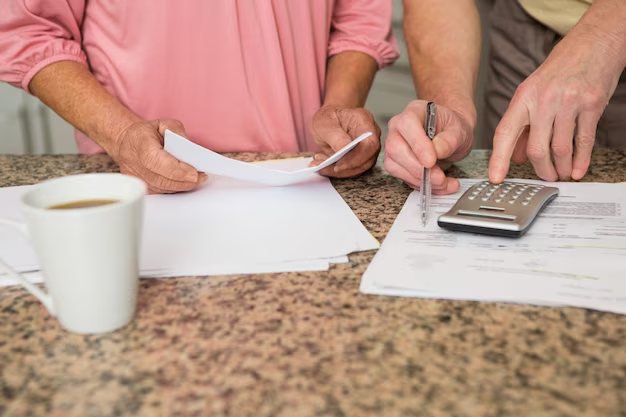Navigating Property Taxes: A Comprehensive Guide to Understanding and Discovering Your Tax Responsibilities
Property taxes can be a daunting aspect of homeownership, often shrouded in confusion and complexity. Yet, they are an unavoidable part of owning real estate. Whether you're a first-time buyer or a seasoned homeowner, understanding how to determine your property taxes is crucial. This guide aims to demystify the process, offering a clear path to help you find out your property tax obligations, including practical steps and considerations to help you manage this important aspect of property ownership.
🏠 Understanding Property Taxes
Before making strides to discover your property tax values, it's key to grasp what property taxes are and how they function. These taxes are primarily levied by local governments, such as cities, counties, or municipalities, to fund essential public services. They are based on the assessed value of your property, which can include the land and any structures on it.
How Property Taxes Are Calculated
- Assessed Value of Property: The local assessor determines this value annually or semi-annually. It reflects the market value of the property.
- Mill Rate: Expressed per thousand dollars of assessed value, this rate can vary widely by location.
- Tax Rate Determination: Municipal budgets play a significant role here, affecting the rates based on public funding needs.
Calculation Example: If your property's assessed value is $250,000 and your local tax rate is 1%, your annual property tax will be $2,500.
🔍 Steps to Find Out Your Property Tax
Unearthing your property tax involves several steps, predominantly involving local resources and tools made available to citizens.
1. Consult Your Local Tax Assessor's Office
The most direct route often involves consulting the tax assessor's office, either in person or via their website. Most offices provide access to:
- Property Records and History: Offering a detailed view of assessments over the years.
- Tax Rates and Mill Rates: Updated figures are typically available year-round.
- Appeals and Adjustments: Procedures for disputing an assessed value if required.
2. Utilize Online Resources
Many local governments have digitized their services, including:
- Online Tax Portals: These tools often require a simple property search based on your address to yield tax details.
- GIS Mapping Services: Allow for geographic searches revealing property boundaries and tax jurisdictions.
3. Check Your Annual Tax Statement
Homeowners typically receive tax bills annually, which detail:
- Assessed property's current value.
- Applicable tax rates.
- Payment due dates and methods.
📑 Factors Affecting Property Taxes
Understanding the nuances behind property taxes can shed light on potential fluctuations in your annual tax bill.
Market Value Changes
Fluctuations in real estate markets can impact your property's assessed value, consequently affecting taxes. A booming market might result in increased taxes due to higher assessments.
Home Improvements
Renovations and structural changes can trigger re-assessments. Adding a pool, major remodels, or extensive landscaping might lead to a reassessment and potentially higher property taxes.
Exemptions and Relief Programs
Many jurisdictions offer various exemptions or relief programs to reduce tax burdens for:
- Senior citizens
- Veterans
- Disabled persons
- Low-income homeowners
These can lead to significant savings if you qualify.
🗂️ Key Tips for Managing Your Property Tax
Proactive management can alleviate the stress associated with high property taxes.
- Keep Up With Assessments: Promptly review your assessment notices and seek clarification if inconsistencies surface.
- Research Exemptions: Stay informed about available local exemptions or relief programs.
- Plan for Tax Payments: Consider setting aside funds monthly to ensure you can meet lump sum payments or set up an escrow account with your mortgage.
💡 Additional Insights and Recommendations
Knowing When to Appeal
If you feel your property has been over-assessed, appealing might be an appropriate step. The appeals process can vary:
- Documentation: Gather evidence of overvaluation through market analysis or professional appraisals.
- Formal Appeal: Adhere to timelines and procedures specific to your locality.
Understanding Tax Increments
It's not uncommon for taxes to increase incrementally over time. Changes in infrastructure, school budgets, or municipal projects can all contribute to this growth.
Long-Term Financial Planning
Anticipate market trends and municipality budget changes which could impact future taxes. Align your financial strategies to these potential changes, ensuring fiscal stability.
📝 Summary Section: Practical Tips For Discovering Property Taxes
Here's a concise list of actionable tips for uncovering and managing your property taxes:
- 🔎 Research: Utilize local tax assessor websites and online portals for detailed property information.
- 📄 Check Statements: Regularly review your annual tax statements for accuracy.
- 🏛️ Visit Local Offices: Take advantage of in-person consultations for clarifications.
- ⚖️ Consider Exemptions: Investigate potential exemptions or relief programs you may qualify for.
- 📝 Appeal When Necessary: File appeals if you believe your property valuation is incorrect based on substantial evidence.
Navigating property taxes doesn't have to be overwhelming. By understanding the basics and leveraging available tools and resources, you can confidently manage your property taxes, ensuring that you remain informed and prepared year after year. This proactive approach not only eases the burden of taxation but also empowers you with the knowledge to make more informed financial decisions related to your property investments.

Related Topics
- Are Property Taxes Tax Deductible
- Can I Get a Property Tax Refund
- Can I Pay Property Tax Online
- Can I Pay Property Tax With Credit Card
- Can Property Tax And Condo Fee Be Deducted In Maryland
- Can You Claim Property Taxes On Your Income Tax
- Can You Claim Property Taxes On Your Tax Return
- Can You Claim Your Property Taxes On Your Income Tax
- Can You Pay Property Tax Monthly
- Can You Totally Not Pay Property Tax Texas